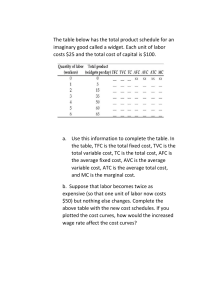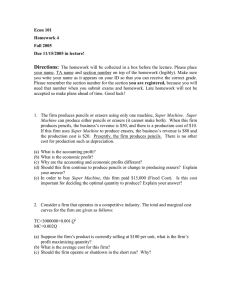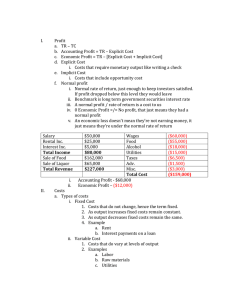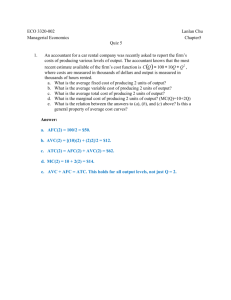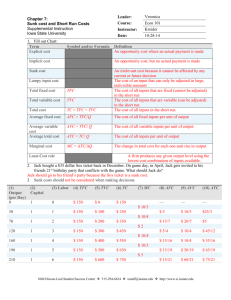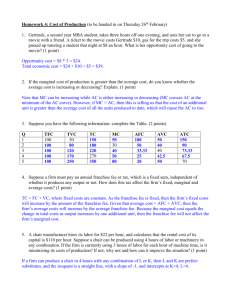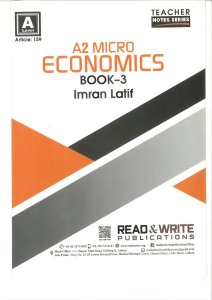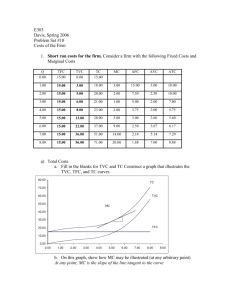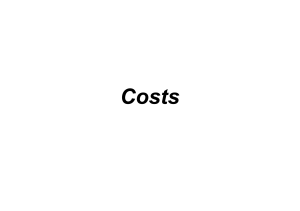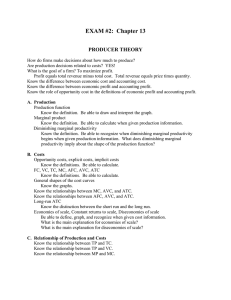Answer Key for Home Work 4 Fall 2005
advertisement
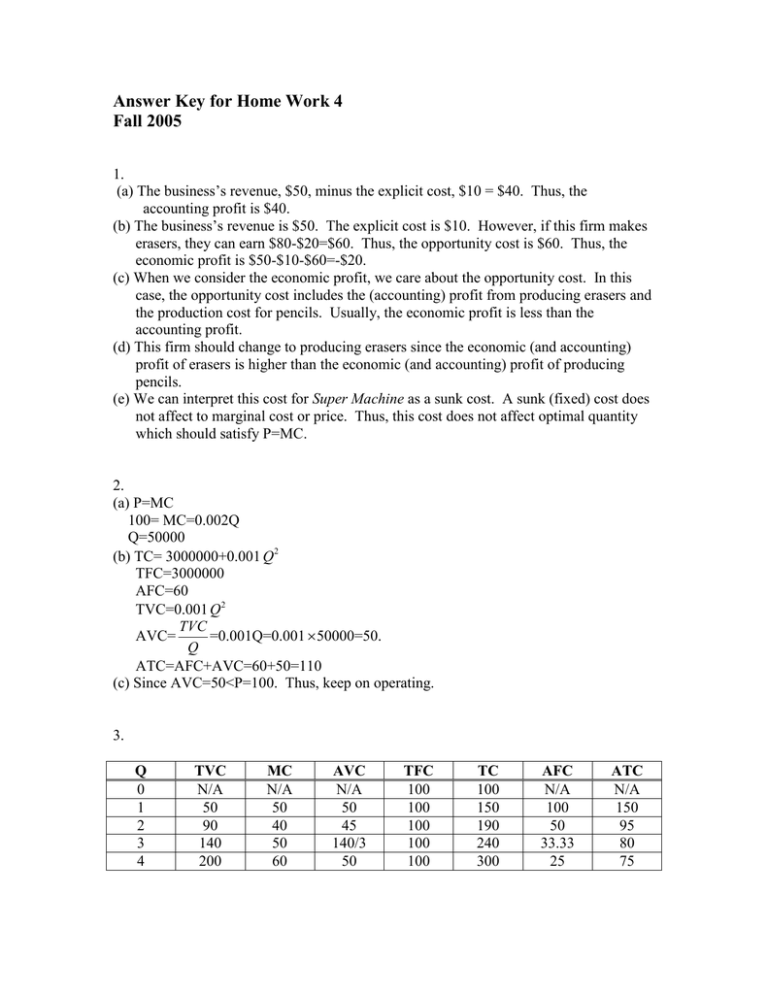
Answer Key for Home Work 4 Fall 2005 1. (a) The business’s revenue, $50, minus the explicit cost, $10 = $40. Thus, the accounting profit is $40. (b) The business’s revenue is $50. The explicit cost is $10. However, if this firm makes erasers, they can earn $80-$20=$60. Thus, the opportunity cost is $60. Thus, the economic profit is $50-$10-$60=-$20. (c) When we consider the economic profit, we care about the opportunity cost. In this case, the opportunity cost includes the (accounting) profit from producing erasers and the production cost for pencils. Usually, the economic profit is less than the accounting profit. (d) This firm should change to producing erasers since the economic (and accounting) profit of erasers is higher than the economic (and accounting) profit of producing pencils. (e) We can interpret this cost for Super Machine as a sunk cost. A sunk (fixed) cost does not affect to marginal cost or price. Thus, this cost does not affect optimal quantity which should satisfy P=MC. 2. (a) P=MC 100= MC=0.002Q Q=50000 (b) TC= 3000000+0.001 Q2 TFC=3000000 AFC=60 TVC=0.001 Q2 TVC AVC= =0.001Q=0.001 50000=50. Q ATC=AFC+AVC=60+50=110 (c) Since AVC=50<P=100. Thus, keep on operating. 3. Q 0 1 2 3 4 TVC N/A 50 90 140 200 MC N/A 50 40 50 60 AVC N/A 50 45 140/3 50 TFC 100 100 100 100 100 TC 100 150 190 240 300 AFC N/A 100 50 33.33 25 ATC N/A 150 95 80 75 4. TC(A)=10*10+5*5=125 TC(B)=100 TC(C)=150 Firm B is the most technologically efficient. 5. (a) Q=10 since MR=P=3=MC (b) (2) Loss since ATC>MR(=P)>AVC. (c) This firm will have an economic loss. TR – TC = Economic Profit or (3-5)*10=-20. (d) A (e) $1
